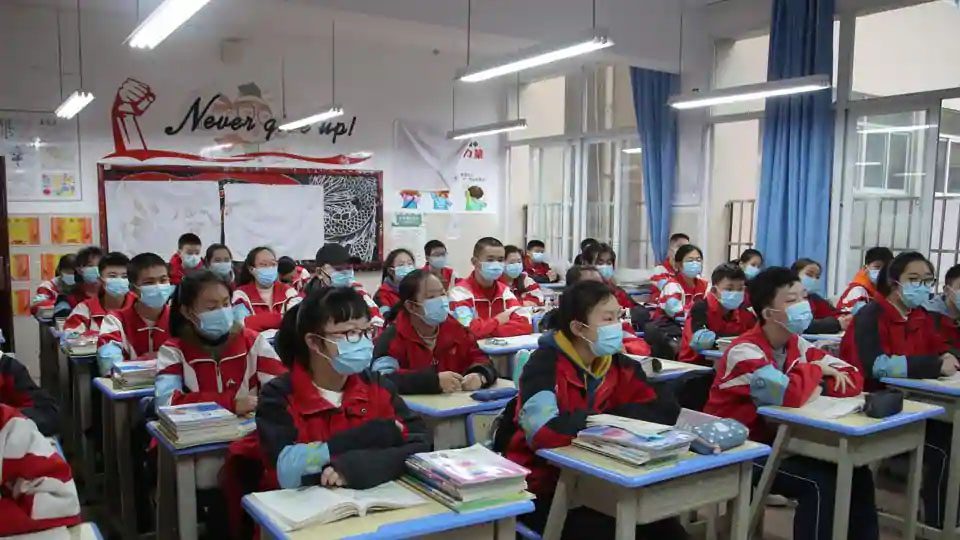As China begins a graded and cautious return to normalcy after the passing of the novel coronavirus outbreak peak in the country, one critical question among many is: What happens when children and young adults return to schools and universities?
Will infection clusters mushroom? Or, as per current patterns, will children get only a milder form of covid-19, or not get infected at all?
The simple answer: No one knows.
Why? Partly because when covid-19 began to spread across China in middle to late January, schools here were already shut or beginning to shut, for the Chinese New Year (CNY) holidays.
Most schools in China have remained shut since the third week of January.
Only schools in the northwestern provinces of Xinjiang and Qinghai and in southwest China’s Guizhou have opened sending hundreds of thousands of students back to school.
Possibly because of the closure of all schools until now, China hasn’t – yet — experienced a school cluster infection.
The WHO-China joint commission report released last month said the under-18s experience a “relatively low attack rate” of the virus, about 2.4%.
The report added the virus to be “relatively mild” among individuals under 19 years old, with only 2.5% of the reported cases developing into a severe disease and 0.2% developing into a critical disease.
Will that low rate change when schools reopen?
Gauden Galea, WHO’s China head, told HT that among the many “unknowns” of this new virus strain is how the novel coronavirus could react when schools reopen and children begin to mingle in large clusters among themselves and with adults like teachers and support staff at educational institutions.
“There are many unknowns (about the virus). For example, children: We know that children have been infected. There’s nothing to stop children being infected. This is very clear,” Galea told HT in an exclusive interview last weekend.
“At the same time, they tend to have a milder form of the disease. So, that’s the pattern. Yes, there have been severe cases, even deaths among children, but they’re very tiny minority and, and in general, children seem to have a very mild form if they get it,” Galea said.
“And indeed, many children have been found asymptomatic; because they’ve been in clusters in families where some adult has been infected…the child also gets the virus. So for the time being, that’s how children have experienced it by meeting the virus through an adult in the family,” the WHO chief said.
Will the infection transmission route change after children gather in the thousands in schools?
Galea added that there hasn’t yet been a school-based infection cluster because schools have not been open since the epidemic began in China.
“So, one has to be extremely careful about the return to school because then the interaction of a lot of children together with the adults who are teaching them, the parents who are accompanying them: they create a new mode of interaction”.
Galea said it was important to categorise the type of educations institutions.
Like primary schools where children go back and forth from their homes to schools and universities where young adults live together in dormitories.
“So opening schools doesn’t mean you open all of these at the same time. So you have to have this weaning back. That will result in a more manageable (situation): If a danger emerges you can more quickly stamp it out,” Galea said.
tags



